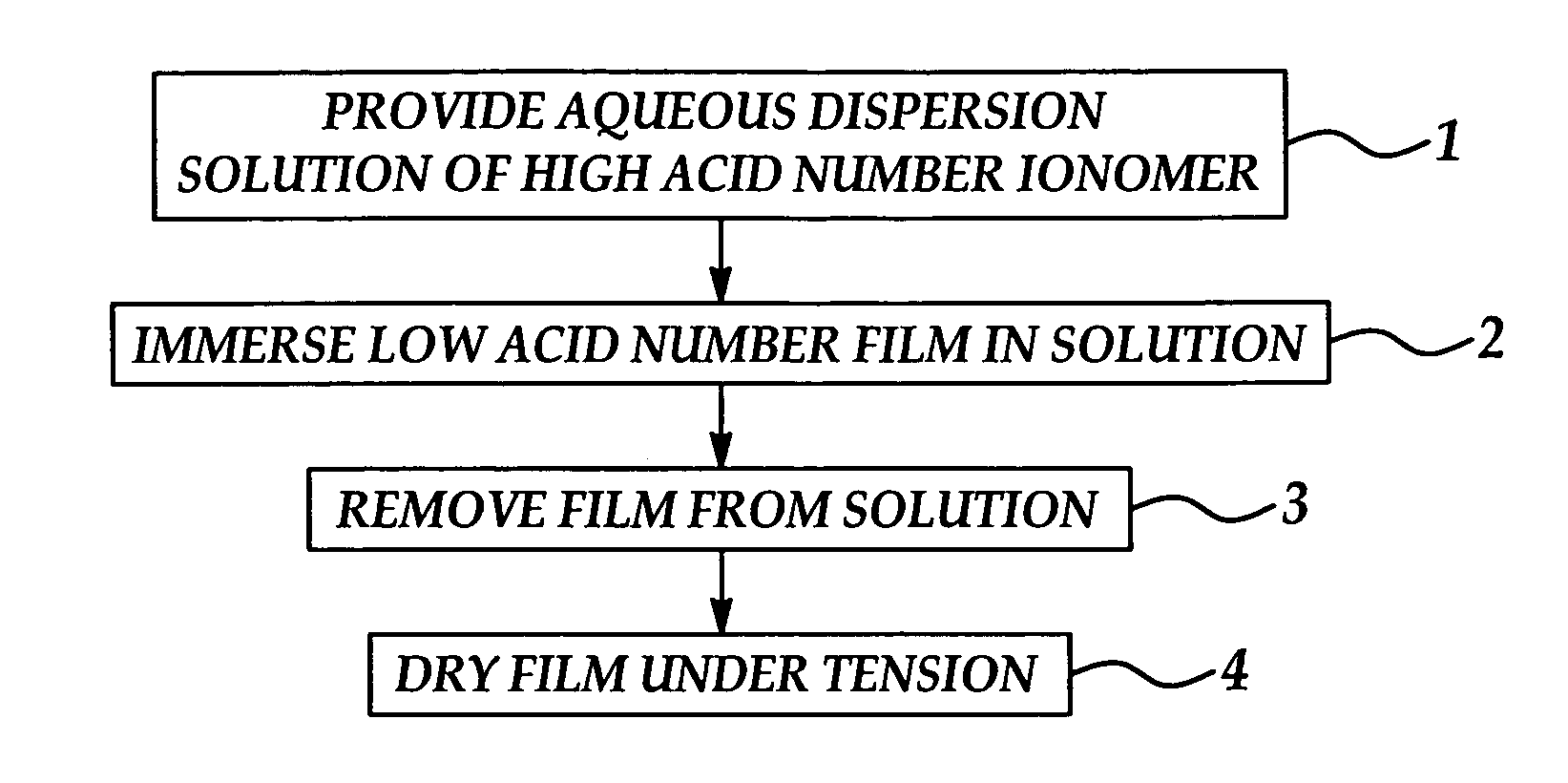Membrane treatment method
- Summary
- Abstract
- Description
- Claims
- Application Information
AI Technical Summary
Benefits of technology
Problems solved by technology
Method used
Image
Examples
example i
[0025] An Aciplex membrane film (1101) and an aqueous dispersion or solution (SS900 / 05) were obtained from Asahi-Kasei. The membrane film was immersed in the aqueous dispersion solution, then removed from the solution and dried under tension. The membrane film increased in weight by 15.4% after drying. The overall amount of ionomer from the SS900 / 05 dispersion solution in the membrane film was 15.4 wt. %. The treated membrane film was about one-half the thickness of the pre-treated membrane film.
example ii
[0026] An Aciplex membrane film (1101) and an aqueous dispersion solution (SS-700) were obtained from Asahi-Kasei. The membrane film was immersed in the aqueous dispersion or solution, removed from the solution and dried under tension, respectively. The membrane film increased in weight by 13.3% after drying for 16 hours at between 150 and 170 degrees C. If lower temperatures are used, the SS-700 component re-dissolves in water. The overall amount of 700 equivalent weight ionomer from the SS-700 dispersion solution in the membrane film was 13.3 wt. %. The treated membrane film was about one-half the thickness of the pre-treated membrane film.
[0027] Tables (I) and (II) below present, in tabulated form, electrical performance data for fuel cells which incorporate the treated PFSA membrane films of the present invention as the polymer electrolyte membrane (PEM) in the fuel cells.
TABLE IHigh Pressure Performance (270 kPaabs)i(A / cm2)Ecell (V)sd_EcellHFR (ohm*cm2)sd_HFREiR-free (V)sd_E...
PUM
| Property | Measurement | Unit |
|---|---|---|
| Percent by mass | aaaaa | aaaaa |
| Equivalent mass | aaaaa | aaaaa |
| Equivalent mass | aaaaa | aaaaa |
Abstract
Description
Claims
Application Information
 Login to View More
Login to View More - R&D
- Intellectual Property
- Life Sciences
- Materials
- Tech Scout
- Unparalleled Data Quality
- Higher Quality Content
- 60% Fewer Hallucinations
Browse by: Latest US Patents, China's latest patents, Technical Efficacy Thesaurus, Application Domain, Technology Topic, Popular Technical Reports.
© 2025 PatSnap. All rights reserved.Legal|Privacy policy|Modern Slavery Act Transparency Statement|Sitemap|About US| Contact US: help@patsnap.com


